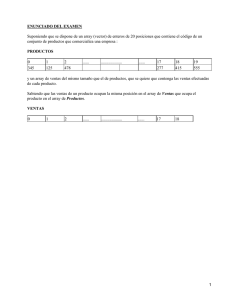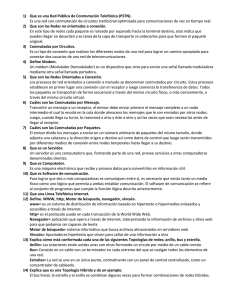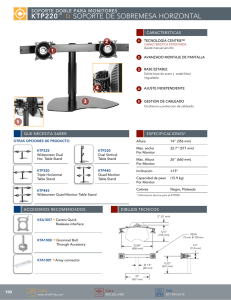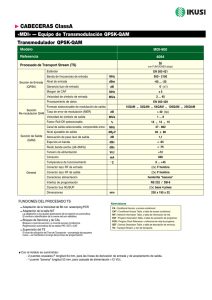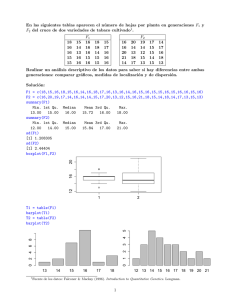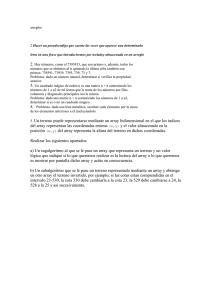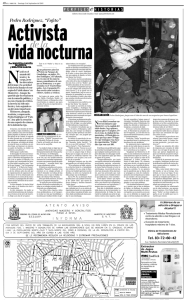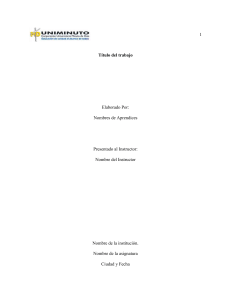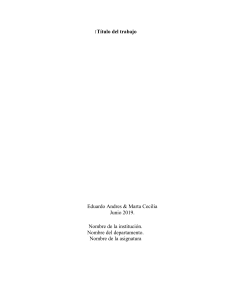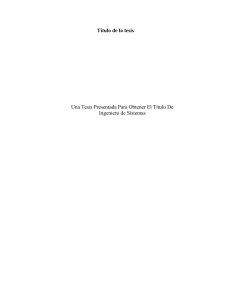Test chi-cuadrado y del cociente de verosimilitudes
Anuncio
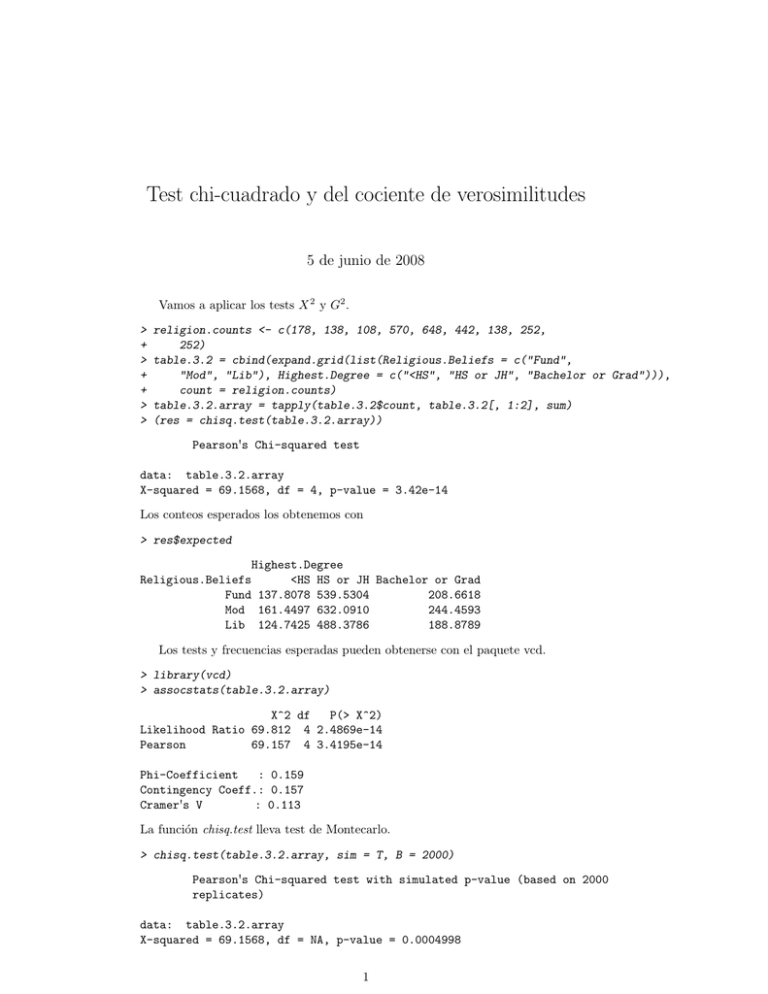
Test chi-cuadrado y del cociente de verosimilitudes 5 de junio de 2008 Vamos a aplicar los tests X 2 y G2 . > + > + + > > religion.counts <- c(178, 138, 108, 570, 648, 442, 138, 252, 252) table.3.2 = cbind(expand.grid(list(Religious.Beliefs = c("Fund", "Mod", "Lib"), Highest.Degree = c("<HS", "HS or JH", "Bachelor or Grad"))), count = religion.counts) table.3.2.array = tapply(table.3.2$count, table.3.2[, 1:2], sum) (res = chisq.test(table.3.2.array)) Pearson's Chi-squared test data: table.3.2.array X-squared = 69.1568, df = 4, p-value = 3.42e-14 Los conteos esperados los obtenemos con > res$expected Highest.Degree Religious.Beliefs <HS HS or JH Bachelor or Grad Fund 137.8078 539.5304 208.6618 Mod 161.4497 632.0910 244.4593 Lib 124.7425 488.3786 188.8789 Los tests y frecuencias esperadas pueden obtenerse con el paquete vcd. > library(vcd) > assocstats(table.3.2.array) X^2 df P(> X^2) Likelihood Ratio 69.812 4 2.4869e-14 Pearson 69.157 4 3.4195e-14 Phi-Coefficient : 0.159 Contingency Coeff.: 0.157 Cramer's V : 0.113 La función chisq.test lleva test de Montecarlo. > chisq.test(table.3.2.array, sim = T, B = 2000) Pearson's Chi-squared test with simulated p-value (based on 2000 replicates) data: table.3.2.array X-squared = 69.1568, df = NA, p-value = 0.0004998 1 El test del cociente de verosimilitud G2 se obtiene como > fit.glm = glm(count ~ Religious.Beliefs + Highest.Degree, data = table.3.2, + family = poisson) > fit.glm$deviance [1] 69.81162 > temp <- predict(fit.glm, type = "response") > matrix(temp, nc = 3, byrow = T, dimnames = list(c("<HS", "HS or JH", + "Bachelor or\nGrad"), c("Fund", "Mod", "Lib"))) Fund Mod Lib <HS 137.8078 161.4497 124.7425 HS or JH 539.5304 632.0910 488.3786 Bachelor or\nGrad 208.6618 244.4593 188.8789 2
